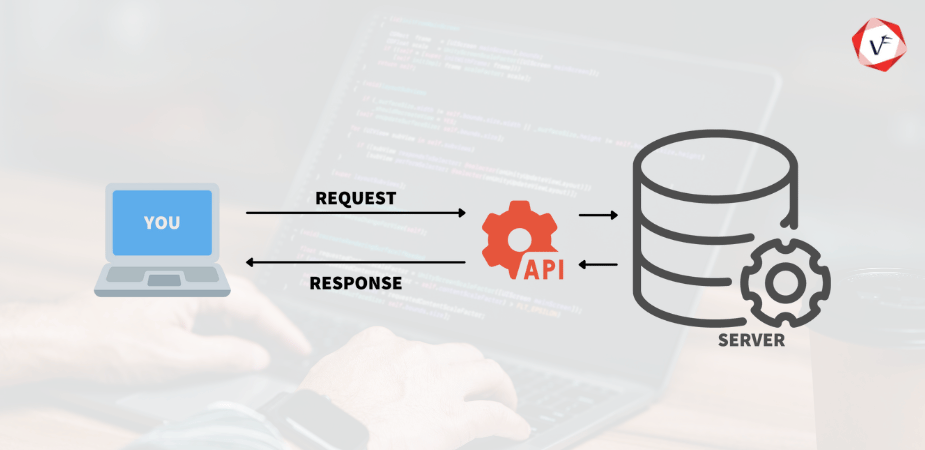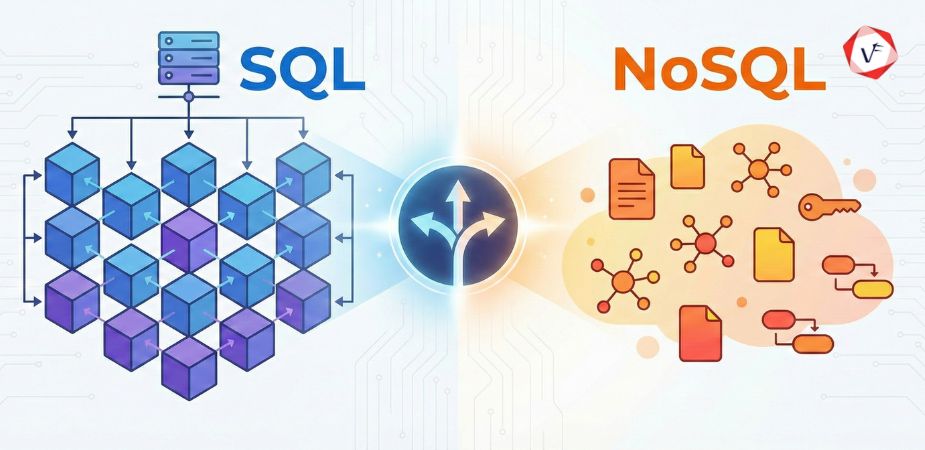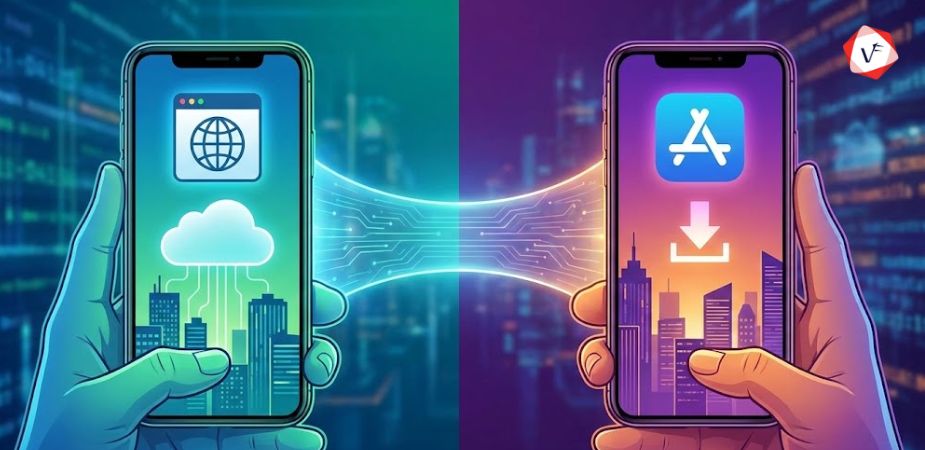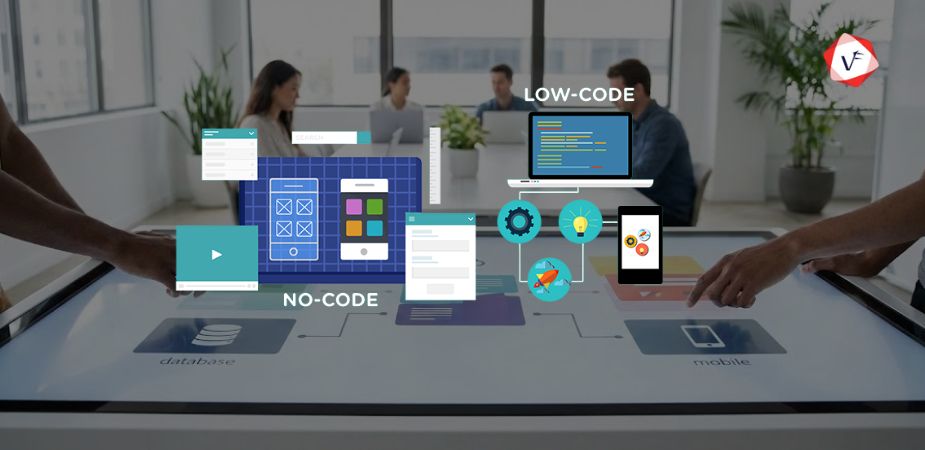- May 26, 2025 11:49 am
- by Safvana
- May 26, 2025 11:49 am
- by Aruthra

Have you ever wondered how apps on your phone talk to each other? Like when you use Google Maps inside a food delivery app or share a Spotify playlist on Instagram? That magic happens because of something called an API. Let’s break it down and make it simple.
API stands for Application Programming Interface. Okay, that might sound like tech jargon, but it’s simpler than it seems. Think of it as a messenger that lets different apps or systems talk to each other.
In today’s digital world, APIs make everything click. They connect apps, websites, and services in the background so you get a seamless experience. Without APIs, your apps would be isolated islands, unable to share or fetch data from other systems.
For example:

Let’s go a bit deeper. An API acts as a bridge between two software systems. Here’s how the process works:
Request: Your app sends a request to another system’s API, asking for specific information or services.
Processing: The API takes that request to its server or database and processes it.
Response: The API sends back the requested data or action in a format the app understands.
Imagine you’re using a weather app. When you enter your city, the app sends a request to a weather service’s API. The API retrieves real-time data for your city from its database and sends it back to the app, which then displays it for you.
APIs often use protocols like HTTP (HyperText Transfer Protocol), which is the same thing your web browser uses to load websites. These protocols ensure the data travels securely and efficiently between systems.
APIs come in different flavors depending on their purpose. Here are the main types:
Open APIs: These are public and available for anyone to use. For example, Twitter provides an open API so developers can create tools using Twitter data. Open APIs help developers build creative solutions without needing special permissions.
Internal APIs: These are used within a company. For example, a company might have an API that its internal teams use to connect apps like payroll or HR systems. These APIs improve efficiency and streamline operations within an organization.
Partner APIs: These are shared with specific business partners. For instance, a hotel booking service might give a travel agency access to its API. Partner APIs strengthen collaborations between companies.
Composite APIs: These combine multiple APIs to complete a single task. For example, booking a flight might involve APIs for airline schedules, payment gateways, and seat selection. Composite APIs are used for complex processes that require multiple steps.
APIs are everywhere. Here are some examples you’ve probably encountered:
APIs use specific formats to exchange data. The most common ones are:
REST (Representational State Transfer):
SOAP (Simple Object Access Protocol):
GraphQL:
APIs make life easier for developers, businesses, and users. Here’s why they’re awesome:
Time-Saving: Developers don’t have to build everything from scratch. They can use existing APIs to add features.
Scalability: APIs allow apps to grow and add more services easily.
Efficiency: Apps can communicate faster, improving performance.
Integration: APIs enable collaboration between different tools and platforms.
Innovation: APIs empower developers to build creative solutions by combining various tools and data sources.
While APIs are great, they’re not perfect. Here are some common challenges:
Security Risks: APIs can expose sensitive data if not secured properly. Developers must implement authentication and encryption to protect information.
Dependency: If an API goes down or changes without notice, it can break the apps that rely on it. This is why maintaining API reliability is crucial.
Complexity: Managing multiple APIs can get tricky, especially for large-scale apps. Organizations often need API management tools to simplify this process.
Versioning: As APIs evolve, older versions may no longer work, requiring developers to update their applications.
As technology evolves, APIs are becoming even more important. With trends like AI, IoT (Internet of Things), and cloud computing, APIs will continue to power innovation. They’re the backbone of digital ecosystems, enabling businesses to connect and thrive.
For example:
AI APIs: Tools like OpenAI’s API allow developers to integrate machine learning models into their apps.
IoT APIs: Smart home devices use APIs to interact with each other and deliver a connected experience.
Blockchain APIs: As blockchain technology grows, APIs help developers build secure and transparent systems.
So, what’s an API? It’s the unseen connector that makes your digital life smoother. Whether you’re booking a cab, scrolling social media, or streaming your favorite show, APIs are quietly doing their job in the background.
Understanding APIs doesn’t require you to be a tech genius. Just think of them as the translators or messengers that make all your favorite apps work together seamlessly. They’re everywhere, and they’re not going anywhere.
The more you understand APIs, the better you’ll appreciate how technology connects us. From simple integrations to powering entire industries, APIs are the unsung heroes of our digital world—and they’re here to stay.
Guaranteed Response within One Business Day!

Database Selection Guide: SQL vs NoSQL
AI Agents in Enterprise Software: How Autonomous AI is Transforming Business Operations
Manufacturing 4.0: AI and IoT Transforming Production Lines

Progressive Web Apps vs Native Apps: Which Should You Choose in 2026?

What is Citizen Development?